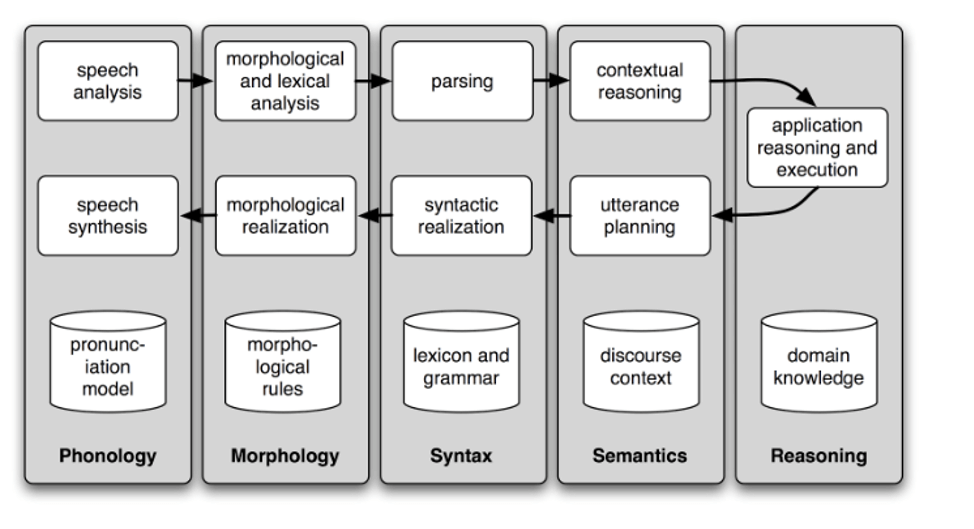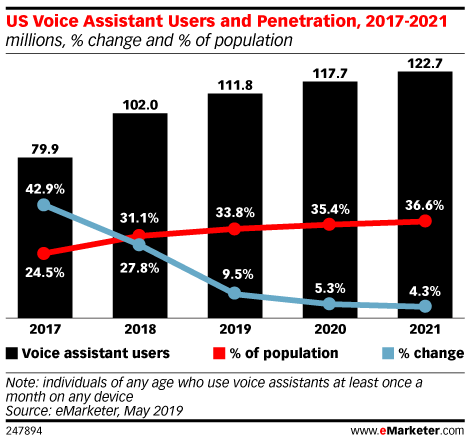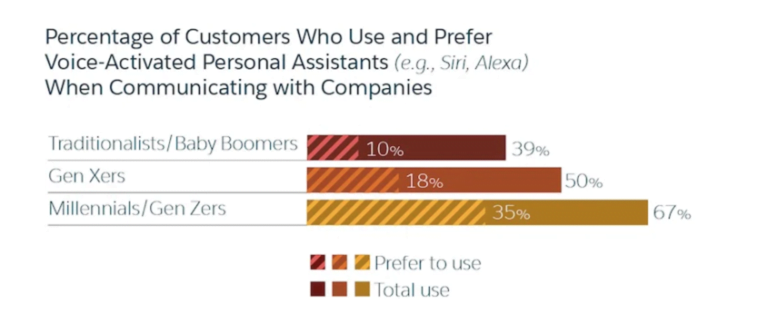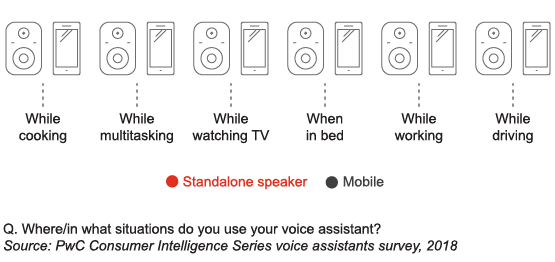Introduction
The possibilities for the future of voice technology are endless, and at the moment one thing is clear: voice search is taking off among consumers who are smitten with the latest home voice assistant devices, including Amazon’s Echo and Google Home.

The rapidly rising adoption rate of digital voice assistants. across the world has obviously made a significant impact on search trends and SEO. The rise of voice assistants, such as Amazon Alexa, Apple Siri, and Google Assistant, are leading a fundamental change that will impact every business. Research that forecasts the global voice recognition market will be worth north of $127B by 2024. Voice will have a bigger impact on the consumer journey than search did in 2000 and smartphones in 2007 and voice assistants are already influencing the shopping journey.

Just a couple years ago, voice search accounted for an incredibly small fraction of total searches worldwide. Today, we’re seeing more than 20 percent of all mobile searches being done by voice, with many predicting that half of all searches will be performed using voice search by 2020. As voice search evolves from voice recognition to voice understanding, Google gets nearer to its aim to transform voice search into “an ultimate mobile assistant that helps you with your daily life so that you can focus on the things that matter.”
Just as voice search algorithms use data, location, and several data points to understand search context, marketers have to dig deeper into understanding the consumer and their behaviour. Real-time data and research on consumer insights can help understand how different people use voice search and on what type of voice-enabled device.
How to Integrate VSO into current SEO Strategy?
- Understanding the Target Customer
- Prioritise Long tail keywords
- Focus on Relevance and Contextual intent
- FAQ Sections
- Google Action/ Alexa Skills
1. Understanding the Target Customer
A marketer can never afford to miss out on this thought, and hence I mention this at the beginning of most of my blogs, even if at the cost of sounding redundant. A 2019 study by Salesforce observed that among Traditionalists and baby boomers, 39% say they’ve used a voice assistant to communicate with a company, but only 10% prefer that. For the millennial and Gen Z generations, 67% have communicated with a company via voice assistant, but only 35% say they prefer it.

2. Prioritise Long tail keywords
As Voice assistant engines become increasingly popular, and their programming becomes more refined, it’s increasingly essential that search engines learn to interpret natural phrases. To help search engines do that, the content should be as conversational as possible. While short tail keywords will not entire stop being relevant, focus on conversational long tail keywords will gain priority. It's important to think of what problems or questions one wishes to solve.

Finding these specific topic clusters and prioritising them based on estimated net traffic KPIs is a great starting point. From there, we can create clear and detailed answers to each of the topics to gain focused domain authority.
A good strategy that’s already been adopted successfully by many websites is to:
- Create content or a webpage with a headline that asks a common question.
- Immediately after the headline, provide a concise answer or definition to the question.
- Use the rest of the page to provide further elaborative detail on the topic.

The significant thing about this strategy is that the rich, robust webpage ultimately appeals to Google’s ranking algorithm. At the same time, the short-and-sweet information at the top of the page is optimised for voice search and might even become a featured snippet.
3. Focus on Relevance and Contextual intent
According to Milestone Marketing research, based on 9,400 schema deployments, they found significant gains of +20-30% – with an average of:
- 40 schema types.
- 130 attributes and properties.
Including a schema markup would be highly beneficial. This HTML add-on helps search engines understand the context of your content, which means you rank better in typical searches, and more relevant in specific queries made through voice search.
4. FAQ Sections
When voice searchers ask a question, they typically begin it with “Who,” “What,” “Where,” “When,” “Why,” and “How.” They’re looking for answers that fulfil an immediate need. The page should be designed with Technical SEO checks in place and include schemas. Information should be easily digestible and long fast.
Make sure to include a functional search bar, which pops up most relevant content.
5. Google Action/ Alexa Skills
As people reach ‘peak screen’ and even begin to scale back their device usage with digital wellbeing features being baked into most operating systems. To combat screen fatigue, voice assistants have entered the market to become a preferred option for quickly retrieving information. Developing Google Action or Alexa skills is a unique way to delight customers. Use cases could be to enable users complete payments, check account usage, or even order food from your favourite restaurant.

| Keyword | Meaning |
|---|---|
| Skill/Action | A voice application, which can fulfill a series of intents |
| Intent | Intended action for the skill to fulfill, what the user wants the skill to do in response to what they say. |
| Utterance | The sentence a user says, or utters. |
| Wake Word | The word or phrase used to start a voice assistant listening, e.g. ‘Hey google’, ‘Alexa’ or ‘Hey Siri’ |
| Context | The pieces of contextual information within an utterance, that helps the skill fulfill an intent, e.g. ‘today’, ‘now’, ‘when I get home’. |
Here's all the technical information you need to build Google action or Amazon Skill.
Conclusion
With the plethora of channels available for reaching customers, the only effective way to crack the optimum marketing mix is to have a concrete understanding of your customers, their needs, think of ways to add value to their lives and help solve their problems.

As share of voice search grows more, companies and competition are bound to develop new use cases. Indeed, we can now see voice enabled electronics. The growth of Voice Analytics will further provide insights into attribution, content performance and usage. Currently though, SEO still leads the way in providing relevant content. There are also privacy concerns, which make these devices, although mobile, more often being used inside the house. All said and done, voice search is here to stay. I think gen-Alpha will someday surely be contemplating how things happen before voice Assistants existed.



3 comments
zackarymcgee
I appreciate you sharing this blog post. Thanks Again. Cool.
Amiya
I like the efforts you have put in this, regards for all the great content.
Mark
Thanks for your blog, nice to read. Do not stop.